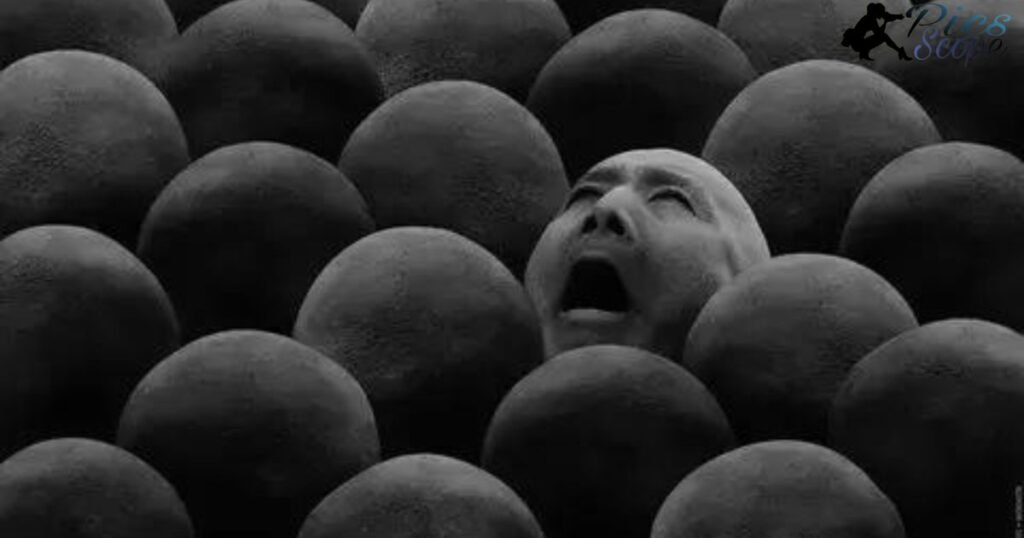Photography freezes moments in time, capturing emotions through light and composition. It involves creating images by recording light on a surface or digitally, a powerful medium for visual storytelling.
What Is Unity In Photography? This question prompts exploration into the cohesive arrangement of visual elements within a photograph, fostering a connection between the viewer and the captured scene.
Unity in photography integrates color, shape, texture, and form to achieve a balanced and impactful composition. By guiding the viewer’s gaze, it enhances the overall visual experience, creating memorable and aesthetically satisfying images.
How To Use Unity In Photography For Good Design
Photography becomes a compelling visual story when you embrace the principle of unity. Start by defining unity – it’s about creating a cohesive arrangement of elements in your photos. Use shape, color, and texture deliberately, keeping it simple yet impactful. Lines guide the viewer’s eye, while lighting enhances unity.
Don’t be afraid to break the rules, experiment with abstract shots, and maintain a proper color palette. These easy steps transform your photos into well-designed, visually striking narratives. Achieving unity in photography isn’t complicated. Focus on balance, patterns, and emphasizing the mood of your photo.
Explore the role of elements like lines, color, and texture in creating a harmonious composition. Keep your compositions simple, paying attention to the overall feel. Remember, unity in photography is about thoughtful design, and with these practical tips, you’ll elevate your photos, captivating viewers with visually appealing narratives.
Start By Defining The Term
In photography, defining terms is a crucial starting point. Begin by understanding what unity in photography means – it’s the artful arrangement of visual elements in a photo to create a harmonious and cohesive composition.
By knowing this, you lay the groundwork for using this principle effectively in your photographic endeavors. To define the term further, consider it as a tool that helps photographers bring diverse elements together.
It involves intentional choices in color, shape, and texture to achieve balance and completeness in an image. As you embark on your photographic journey, having a clear grasp of the term unity in photography sets the stage for creating visually engaging and impactful photo
What Is Unity In Photography?
Certain photos have that je ne sais quoi a special appeal that you can’t quite put your finger on. For many captivating images, that quality is unity, which exists when multiple aspects of an image are visually in sync and working in harmony to strengthen the theme.
How Do You Use Unity In Photography?

Using the keyword What Is Unity In Photography? involves combining different elements to create a cohesive and visually appealing image. Start by defining the term unity in photography, which refers to the intentional arrangement of visual elements like color, shape, and texture to achieve harmony.
To apply unity in photography effectively, consider incorporating elements such as lines, shapes, and colors that work together to convey a clear and unified message in your photographs. Experiment with lighting to enhance unity in photography, guide the viewer’s gaze, and create a balanced composition.
Free Composition Cheatsheet
Unlock the secrets of composition effortlessly with our Free Composition Cheatsheet. This handy resource provides straightforward tips and visual guides to enhance your photography composition skills. It’s a quick reference tool designed to help you create visually stunning images without any hassle.
Download the Free Composition Cheatsheet now to discover practical insights on balance, framing, and focal points. Elevate your photography game and start capturing captivating moments with ease, using this user-friendly guide to enhance your composition skills.
Two Examples Of Unity In Photography That Explain Better Than Words
See unity in action with these two striking examples of photographic harmony. In the first example, vibrant colors seamlessly blend to create a cohesive and visually pleasing composition.
Notice how each element contributes to the overall unity, telling a compelling visual story without the need for words. In the second example, explore the power of texture and how it unifies the various elements within the frame, adding depth and interest to the photograph.
These examples vividly illustrate the impact of unity in photography, demonstrating how a well-balanced combination of elements can speak volumes without uttering a single word.
Elements Affecting The Feel Of Images
In photography, color holds immense power. The hues you choose influence the overall mood and vibe of your image. Whether it’s warm tones for coziness or cool shades for a calming effect, color directly impacts how viewers connect with your photo.
Texture plays a vital role too. The roughness of a surface or the smoothness of a subject can evoke different emotions. By paying attention to texture, photographers can add depth and tactile appeal to their images, shaping the feel and engagement of the viewer.
Color
Color plays a vital role in photography, influencing the mood and visual appeal of an image. Photographers carefully select and manipulate colors to evoke specific emotions and enhance the overall impact of their photos. Whether vibrant and bold or soft and muted, the chosen color palette can convey a story, create emphasis, and capture the viewer’s attention.
Understanding the basics of color theory is essential for photographers. It involves knowing how different colors interact, complement, or contrast with each other. By applying this knowledge, photographers can create harmonious compositions and convey their intended messages more effectively. What Is Unity In Photography
Texture
Texture in photography refers to the surface quality of an object captured in an image. When you see a photograph with visible details like the roughness of a tree bark or the smoothness of a reflective surface, you’re experiencing the impact of texture.
Photographers deliberately emphasize texture by adjusting lighting, focus, and angles, creating visually interesting compositions that allow viewers to almost feel the tactile qualities of the subjects.
To enhance texture in your photos, consider experimenting with different lighting angles. Shadows and highlights cast by light sources, such as the sun or artificial lights, can dramatically emphasize the texture of surfaces.
By paying attention to these details and strategically using lighting, you can bring out the richness of texture in your photographs, adding depth and visual interest to your visual storytelling.
Combining Elements For Unity

Combine colors, shapes, and textures in your photos for a What Is Unity In Photography? Mix these elements deliberately to create harmony and visual cohesion. Experimenting with combinations brings out the best in your photography, making each element work together for a striking and balanced image.
When aiming for unity in photography, ensure that every element plays a role in the overall composition. Avoid random placement; instead, arrange elements purposefully to convey a clear and cohesive message in your photographs. By consciously combining these visual elements, you guide the viewer’s eye and create a captivating image with a What Is Unity In Photography? unified and intentional visual impact
Using Different Elements To Achieve Unity
Starting a boudoir photography business involves more than just capturing images. Combine colors, shapes, and textures in your photos to create a cohesive and striking portfolio. Experimenting with these elements will enhance your work and set you apart in the competitive world of boudoir photography.
When aiming for unity, ensure that every element plays a role in the overall composition. Avoid random placement; instead, arrange elements purposefully to convey a clear and cohesive message in your photographs. By consciously combining these visual elements, you guide the viewer’s eye and create a captivating image with a unified and intentional visual impact.
How To Use Color, Texture, And Shape To Create Unity In Photography?
Combine colors, shapes, and textures intentionally for a unified visual experience.
- Experiment with different combinations to find harmonious and balanced arrangements.
- Ensure each element contributes to the overall composition for a clear and cohesive message.
- Avoid random placement and arrange elements purposefully to guide the viewer’s eye.
- Consciously use color, texture, and shape to create captivating and intentionally impactful images in photography.
How To Use Line To Create Unity In Photography?
Activate Visual Harmony: Employ lines purposefully in your photos to guide the viewer’s gaze, creating a sense of cohesion and unity.
Direct Viewer Engagement: Utilize lines as a dynamic tool, leading the eye through the frame, connecting diverse elements, and enhancing the overall impact of your photographic composition.
Don’t Overcomplicate Using Unity In Photography?

Keep your photography simple and clear by avoiding unnecessary complexities in achieving unity. Focus on straightforward techniques to enhance the overall impact of your images.
Simplify your approach to unity in photography; opt for uncomplicated methods that effectively convey your message without unnecessary intricacies. By avoiding overcomplication, you ensure that your visual storytelling remains accessible and resonates with your audience.
Exploring Unity And Variety In Design
In design, unity means making elements work together for a cohesive look. It’s like creating a team where each player complements the others, forming a visually harmonious result. On the other hand, variety introduces elements that add interest and keep things dynamic, injecting energy into the overall design. It’s the balance between unity and variety that makes designs both organized and engaging.
When exploring unity and variety in design, think of it as a dance – a perfect choreography of elements that are in sync yet offer delightful surprises. Unity provides the stability, while variety brings in the excitement. Together, they create a visual experience that is not only pleasing but also captures and holds the viewer’s attention.
Unity And Variety In Design
In photography, unity means bringing elements together for a harmonious composition. Colors, shapes, and textures work in unison, creating a cohesive visual experience. Variety, on the other hand, introduces diversity, adding interest and preventing monotony in the overall design.
Balancing unity and variety in photography ensures a captivating and well-rounded visual impact for the viewer. When crafting a photograph, unity ensures that all elements contribute to a common theme.
It’s like a puzzle where each piece fits, creating a pleasing and seamless whole. Variety injects excitement, allowing for creative expression and capturing the viewer’s attention with dynamic and engaging visuals. In photography, the delicate dance between unity and variety results in compelling and well-balanced imag
What Are The 7 Principles Of Art And Design?
The 7 principles of art and design serve as foundational guidelines for creating visually appealing and meaningful compositions. These principles ar
Balance in photography
- Balance in photography involves evenly distributing visual elements.
- Strategically place key elements within the frame for a harmonious image.
- A well-balanced photo captivates, conveying order and stability to the viewer.
Rhythm in photography
- Rhythm in photography involves creating a visual flow that guides the viewer’s eye through the image.
- Use repeating patterns, shapes, or contrasting elements to establish a sense of rhythm.
- A well-executed rhythm adds dynamism and interest, making the photograph more engaging.
Patterns in photography

- Patterns in photography involve capturing repetitive elements to create visual rhythm.
- Utilize patterns to add interest and structure to your images, enhancing their overall appeal.
- Whether in nature or urban scenes, recognizing and emphasizing patterns can result in captivating photographs.
Emphasis in photography
In photography, emphasis directs the viewer’s attention to a specific subject or element within the image. It’s about making certain aspects stand out, creating a focal point that grabs the viewer’s eye.
Photographers use techniques like contrast, color, and framing to achieve emphasis, ensuring that the most important elements in the photograph are easily noticed. Emphasis adds visual interest and helps convey the photographer’s intended message with clarity.
Contrast in photography
Contrast in photography means highlighting differences between elements in a photo. It’s achieved by showcasing variations in tones, colors, or brightness. Bold contrasts enhance visual impact and draw attention to key details, making images more dynamic.
Photographers use contrast to create visually striking compositions. By juxtaposing light and dark elements, they add depth and emphasize the subject. Strong contrasts can evoke powerful emotions and ensure that important details stand out in a captivating and straightforward manner.
Unity in photography
Photography unity means arranging elements like color, shape, and texture to make a harmonious image. Photographers intentionally use these elements to guide the viewer’s focus and create a balanced, impactful picture. Achieving unity in photos involves purposeful composition, making the visual experience engaging and cohesive for the audience.
Unity in photography brings diverse elements together for a visually satisfying composition. It’s about using lines, colors, and patterns to create a cohesive and balanced image. By keeping it simple and emphasizing essential elements, photographers can convey a clear message and evoke a strong connection with their audience.
Movement in photography
Photography captures action and emotion through movement. Photographers use techniques like freezing or blurring to convey dynamism in a shot. Mastering movement adds energy and excitement, creating visually engaging photographs.
In photography, movement is about capturing the essence of motion. Adjusting shutter speed influences how fast or slow the movement appears in an image. Experimenting with movement in photography allows for creative expression and brings a dynamic touch to your visual storytelling.
Photography Tips For Achieving Unity
Enhance your photos by using simple shapes and colors. Pay attention to textures and create a mood with proper lighting. These practical tips will help you achieve a unified and visually appealing compositio
Use Shape In Your Composition
Shape plays a crucial role in creating visually engaging photographs. Incorporating various shapes into your composition adds interest, structure, and a sense of unity to your images.
Whether it’s the simplicity of geometric shapes or the organic forms found in nature, understanding how to use shape effectively can elevate your photography. Below are key tips on using shape in your composition to enhance the visual impact of your photos:
| Tip | Description |
| 1. Embrace Geometric Shapes | Experiment with squares, circles, and triangles for structured compositions. |
| 2. Utilize Negative Space | Allow empty spaces to highlight shapes, adding balance and visual interest. |
| 3. Incorporate Organic Forms | Capture natural shapes in landscapes or everyday scenes for a more fluid and dynamic feel. |
| 4. Pay Attention to Silhouettes | Use silhouettes to emphasize shapes, creating striking and recognizable images. |
| 5. Experiment with Shadows | Play with shadows to enhance the perception of shape and depth in your photographs. |
In photography, the deliberate use of shape contributes to the overall unity and visual coherence of an image. By incorporating these tips into your composition, you can create photographs that not only showcase interesting shapes but also convey a sense of balance and harmony.
Make Use Of Proper Color Palette
Choose the right colors for your photos to create a pleasing visual impact. Pick a color palette that enhances the mood and message you want to convey. Using a proper color palette adds vibrancy and unity to your photographs.
Pay Attention To Texture
Feel the surface of your photos – texture adds depth and interest. Run your eyes over rough or smooth details, creating a tactile experience in your images. Choose subjects with varied textures to make your photos visually engaging and dynamic.
Create Unity With The Mood Of Photo
| Mood | Description |
| Serene | Soft lighting, cool tones, tranquil settings |
| Vibrant | Bright colors, dynamic scenes, energetic feel |
| Mysterious | Shadows, low-key lighting, enigmatic ambiance |
In photography, creating unity with the mood of a photo involves carefully crafting an atmosphere that resonates with the viewer. The table above provides examples of different moods and their corresponding descriptions.
Use Lines As A Means To Take A Unity Photo
Lines play a crucial role in photography, directing the viewer’s gaze and contributing to the overall impact of the image. Integrate contrast in photography by strategically using lines to guide attention, fostering a sense of order and cohesion within your composition.
Explore various line types, including diagonal or converging lines, to infuse visual interest and enhance the unity of your photograph, creating a dynamic and engaging visual narrative.
Take Unity Photos Using Lighting

- Utilize lighting to capture unity in your photos.
- Experiment with natural or artificial light sources for different effects.
- Play with shadows and highlights to enhance the overall visual harmony in your images.
Emphasize Patterns
Spotting patterns in photography adds visual interest to your images. Capture repeating elements, like textures or shapes, to create a dynamic and engaging composition. Experimenting with patterns enhances the overall appeal of your photos, making them stand out and captivate viewers’ attention.
Highlighting patterns brings a sense of rhythm to your photographs. Whether it’s the repetition of lines in architecture or the flow of natural elements, patterns provide a visual guide for the viewer’s eye. Incorporating these patterns actively contributes to the vibrancy and coherence of your photography, elevating the impact of your visual storytelling.
Don’t Be Afraid To Get Abstract
Experiment with abstract photography fearlessly. Break free from conventional norms and explore unique perspectives in your shots. Embracing abstraction adds a dynamic and creative dimension to your images, making them stand out with individuality and artistic flair.
Incorporate unconventional elements confidently. Let go of hesitation, and infuse your photography with abstract forms and patterns. By doing so, you inject energy and intrigue into your visuals, creating a captivating experience for viewers without the constraints of traditional approaches.
Don’t Be Afraid To Break The Rules
In photography, embracing contrast is encouraged for creative expression. Experiment with angles, lighting, and composition to discover unique perspectives. Embrace the freedom to capture moments in unconventional ways for visually compelling results.
Challenge conventions in photography by defying traditional norms. Innovate with your approach, explore new techniques, and don’t hesitate to break away from established rules.
Unleash your creativity, and capture images that stand out with a fearless approach to breaking the rules. Embracing contrast allows your photos to communicate a powerful visual narrative that goes beyond the ordinary.
What Is The Meaning Of Unity Pictures?
Unity in pictures means bringing different elements together for a cohesive and balanced visual experience. It involves combining colors, shapes, and textures intentionally to create a harmonious composition that captivates the viewer.
In essence, unity in pictures ensures that all elements work together seamlessly, guiding the viewer’s gaze and conveying a clear and unified message. Photographers use this principle to enhance the impact of their images, fostering a connection between the audience and the captured scenes.
Why Is Unity Important In An Image?
Unity in an image is crucial because it helps elements work together harmoniously, creating a visually pleasing and coherent composition. When different elements, like color, shape, and texture, are unified, the image becomes more impactful and communicates a clear message to the viewer.
Without unity, an image may feel disjointed or confusing, lacking a sense of purpose. By prioritizing unity, photographers guide the viewer’s eye through intentional design, ensuring that every element contributes to the overall visual cohesion and effectiveness of the image
What Is Unity Or Harmony In Photography?
Unity in photography means bringing different elements together for a cohesive and balanced image. It involves combining colors, shapes, and textures intentionally to create a harmonious visual experience.
Harmony in photography is achieved by organizing elements to work together, conveying a sense of completeness. When colors and shapes blend seamlessly, the photo becomes visually appealing and communicates a unified message to the viewer.
What Is Conceptual Unity In Photography?
Conceptual unity in photography refers to the intentional arrangement of elements to convey a clear and cohesive message. Photographers achieve this by thoughtfully selecting and arranging subjects, ensuring that every component contributes to the overall narrative.
It involves a purposeful approach to visual storytelling, where each element plays a role in communicating the photographer’s concept.
What Is Unity In Photography Examples
Unity in photography means bringing elements together for a cohesive image. Colors, shapes, and textures work harmoniously to create visually pleasing and impactful photos.
Examples of unity in photography include well-balanced compositions. When colors complement each other, shapes align, and textures add depth, the result is a photograph that captivates with its unified visual appeal.
What Is Variety In Photography

Variety in photography refers to the inclusion of diverse elements in an image, creating visual interest and avoiding monotony. Photographers achieve variety by incorporating different colors, shapes, textures, and subjects within the frame.
In essence, variety adds dynamism to photographs, captivating viewers and preventing visual stagnation. By skillfully blending contrasting elements, photographers can craft engaging compositions that hold the viewer’s attention and convey a sense of vitality.
FAQ’s
What does Unity in Photography Mean?
Unity in photography refers to the intentional arrangement of visual elements, like colors and shapes, to create a cohesive and harmonious image.
Why is Unity Important in Photography?
Unity is crucial in photography as it guides the viewer’s perception, creating a sense of completeness and visual impact in the composition.
How Can I Achieve Unity in My Photos?
Achieve unity by purposefully combining colors, shapes, and textures, ensuring each element contributes to the overall harmony and storytelling of your photograph.
Conclusion
In conclusion, What Is Unity In Photography? serves as the guiding principle for creating visually compelling and harmonious images. By consciously blending colors, shapes, and textures, photographers can achieve a unified look that captivates viewers and conveys a clear visual message.
Experimenting with these elements adds depth and richness to photographs, ensuring that every component plays a vital role in the overall composition. Embracing the concept of unity in photography transforms images from mere captures to intentional works of art.
As photographers skillfully arrange and combine visual elements, they guide the viewer’s eye, fostering a deeper connection to the image. Ultimately, understanding and implementing What Is Unity In Photography? elevates the impact of photographs, creating a lasting impression and telling a powerful visual story.







